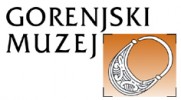Wraps
In the past, the transport of cargo and other loads was done in various ways and by numerous different means meant to ease and speed up the transport. Among the oldest forms of transport is carrying loads atop the head. They achieved this using a special, simple contrivance called the wrap, or “svitek”.
How were they used?
The wrap is shaped like a small ring-shaped pillow and was placed atop the head. On it, they then placed the load, such as a bucket, pail, basket, hamper or bag. This way, the weight of the load didn’t press directly on the head and it was also made it easier to keep balanced. The wrap was used mainly by women, most of the time for carrying different loads over large distances, for example water from the well, lunch for the mowers in the meadows and the workers in the fields and woods, to carry produce from the fields or to the market, to carry Easter offerings to church, and so on. Even newborns were carried in this way, in a specially constructed cradle, to be baptised. Through the use of the wrap, women were able to carry up to 32 kilograms of ore (the maximum amount that could be carried by a Roman Soldier). Men, on the other hand, used the wrap to carry various things in their large back-baskets, for example, the shepards used them on their way to pasture.
Many women were so adept at the use of the wrap that they could carry a bucket or pail on their head without needing to hold it in place with their hands. In one hand, they often carried an additional can, bundle or tools when they went to the fields, while they kept the other hand free. That is why the bucket or pail atop their head needed to be correctly and evenly balanced. The women were especially smug, even vain, dressed in their festive clothes and carrying their Easter offerings to be blessed in church.
In the first half of the 20th Century, with the advent of plumbing and the development of modern forms of transport, the use of head wraps started dying out. After World War Two, wraps were used only to carry Easter offerings to be blessed in church. Today, wraps still adorn some homes as a remembrance of their grandmothers, though, most likely, they are still used only by some folklore groups as part of their pail dance.
How were they made?
Making the wraps took place in specialised workshops, though they also often made them from bits and pieces at home. The wraps from specialised workshops were meticulously made craft items and, since their appearance was very important, they were adorned with intricate and colourful decorations and made of quality materials. These wraps are often better preserved as they were only used for special occasions, for example to carry the Easter offerings to be blessed in church. The homemade wraps are visibly clumsier and their decorations are also far simpler. They were made from materials kept around the house. They placed horsehair (or wool, hair, dried weeds, sawdust and bits of cloth or leather) on a piece of cloth and wrapped it into the basic shape, around which different coloured ribbons were then laced together. Since the wraps were used for everyday tasks and because they were often not very well made, many of them are very worn out and damaged.
The collection of wraps at the Gorenjska Museum
Twenty-six wraps are kept in the museum. Most of these were made in the first half of the 20th Century, while the oldest ones are from the second half of the 19th Century. They were gathered in Bohinj, Planina under Golica, Kamna Gorica, Šenčur, Tržič, Mengeš, Saleška valley, Strahinj near Naklo and in Jesenice. Most of the wraps were made by professional makers/craftsmen, while the rest were made by the housekeepers themselves for everyday use. Roughly, we distinguish two types of wrap decorations. Most of the wraps are adorned by vertical black ribbons (ribbons wrapped around the filing), while vibrant coloured ribbons are laced together on the outside, forming triangular, trapezoid and other shapes. The “lower” and “upper” parts, i.e. the parts where the wrap touches either the head or the burden, of the wrap are black. The rest of the wraps are decorated with vertically placed ribbons of various colours, which are crossed, in two examples, by black ribbons, and white ones in a third example, with white ribbons on the outside.
Today, wraps are mainly remembrances of times past. In the Gorenjska museum, you can attend a workshop where we teach you the usage of the wraps and where you can also make a wrap of your own.

